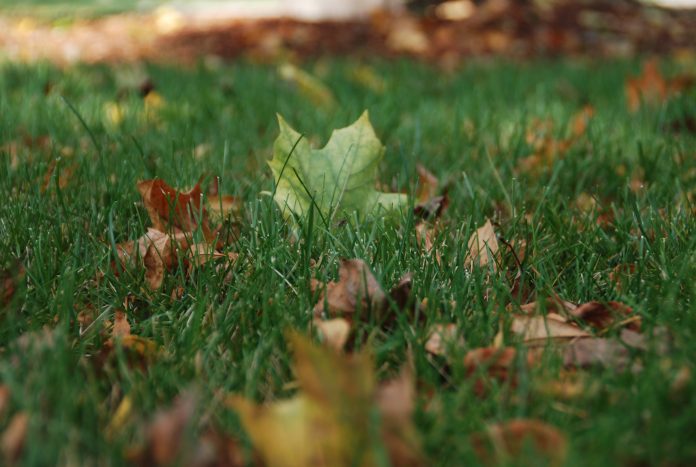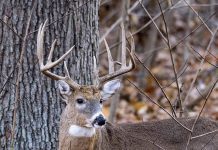
Put fall leaves to work in your landscape. This valuable resource makes a great mulch in planting beds, adds organic matter and nutrients to the soil, provides habitat for many beneficial insects, and is insulation for ground-dwelling queen bumblebees, toads, and more.
Leave any disease-free leaves in garden beds but pull them away from the trunks of trees and stems of shrubs. Mulch piles against trunks or stems create a moist environment that is more subject to rot and disease. It also provides a hiding place next to these plants for voles that feed on bark over winter.
Avoid thick layers of leaves, six or more inches deep, in garden beds. They can block sunlight and smother the plants below. Pull leaves off the crowns of perennials and move the excess leaves to gardens with little or no mulch.
Use your mower to recycle fall leaves that land on the lawn. As you mow the grass you’ll shred the leaves into smaller pieces. If they are the size of a quarter or smaller your lawn will be fine. As these leaf pieces decompose, they add organic matter and nutrients to the soil.
When the lawn is overwhelmed with leaves burn a few extra calories and rake them into nearby planting beds. Whole leaves provide the best habitat for overwintering insects. Spread the leaves over the soil surface to help insulate the roots, conserve moisture, suppress weeds, and improve the soil as it breaks down.
If your garden beds are already filled with leaves or this is not practical, attach the bagger to the mower to shred and collect the excess leaves on the lawn. Only use grass clippings collected from lawns and leaves not treated with a weed killer this fall.
Dig extra shredded leaves into vacant annual flower and vegetable gardens or incorporate them into the soil as you prepare new planting beds. They will break down over winter, improving the drainage in heavy clay soils and increasing the water-holding ability in fast-draining soils.
Bag shredded leaves you want to save for next season. Tuck them out of sight for winter under trees or around the foundation of your house for added insulation.
Create compost with fall leaves, plant-based kitchen scraps, and other landscape trimmings. Do not use meat, bones or dairy that can attract rodents, charcoal ash, and human, pet or bird droppings that may contain disease organisms. Avoid diseased and insect-infested plant debris, perennial weeds, and weeds gone to seed. These can survive in compost piles that don’t produce sufficient heat to kill them and end up back in the garden in the compost.
Oak and large maple leaves make great mulches and additions to the compost pile but break down slowly. Shred them with your mower or leaf shredder first for quicker results.
You can compost black walnut, laurel, and eucalyptus leaves that contain chemicals toxic to other plants. Shred them first to speed decomposition and when they are fully decomposed the compost is safe to use in the garden.
As you begin putting the fall leaves to work in your landscape you will start considering them a gift, not a curse, from nature.

















